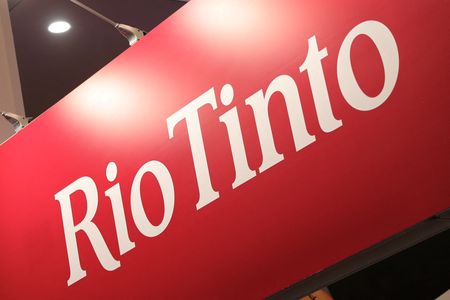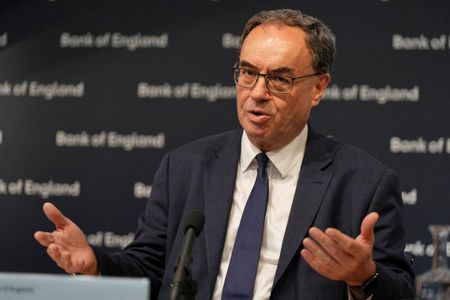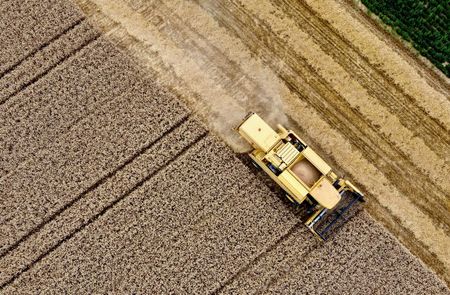By Clara Denina, Melanie Burton and Himanshi Akhand
LONDON/MELBOURNE (Reuters) – Rio Tinto does not support a push by some shareholders to consolidate the company’s dual-exchange share listing in Sydney, its CEO told Reuters on Wednesday as the miner reported its lowest full-year underlying earnings in five years.
Rio in a separate statement recommended its shareholders in London vote against a resolution requesting a review of its dual-listed structure at its annual general meeting in April. Shareholder pressure forced top listed miner BHP to review its dual listing structure and ultimately consolidate it in Australia in 2022.
“We are a global company, we have global investors, and London kind of works for us. I just don’t believe that you’re going to change fundamentally your value by (swapping) exchange,” CEO Jakob Stausholm said in an interview.
Activist investor Palliser Capital and more than 100 other shareholders in December sought a shareholder resolution calling for Rio’s dual-listed model to be reviewed and urged the miner to keep only its listing in Australia. Their reasoning is that such a move would bolster the company’s share price.
Some companies have left London in recent years for the United States or other markets, under pressure from investors seeking to boost the value of their shares.
Miner and commodity trader Glencore said on Wednesday that it was studying moving its primary listing to another exchange.
Rio, the world’s largest iron ore producer, reported underlying earnings of $10.87 billion for 2024, compared with $11.76 billion a year ago. Visible Alpha consensus was for $11 billion.
Sydney-based portfolio manager Andy Forster of Argo Investments said he did not have a strong view on the listing structure, but he liked Rio’s full-year dividend of $4.02 a share even though it was the lowest since 2019. The 60% payout ratio – the top end of the miner’s long-term dividend policy payout range of 40% to 60% – “shows confidence in growth to grow earnings to be able to maintain payout and fund capex,” he said.
Rio’s Australian-listed shares fell 2% in early trading on Thursday, in line with weakness across diversified miners.
Iron ore prices moderated last year on weak demand from China’s struggling property sector and high port-side inventories, which dented the miner’s earnings from the raw material used in steelmaking and offset growth in its copper and aluminium segments.
Underlying operating earnings for Rio’s iron ore division fell 19% for the year, while its aluminium business posted a 61% increase in annual underlying operating earnings.
Meanwhile, the ramp-up at the Oyu Tolgoi mine in Mongolia, a strong performance at Escondida in Chile and higher refined copper production at Kennecott in Utah following the restart of the smelter led to a 75% rise in underlying operating earnings for the company’s copper business.
Rio, which derives most of its profits from iron ore but is increasingly focused on copper, declared a final ordinary dividend of $2.25 per share, below last year’s $2.58.
Rio expects total losses of 13 million metric tons of iron ore from tropical cyclones that have hit Australia’s west coast and snarled iron ore shipments so far this year.
“Production guidance has remained the same, even on iron ore, but the company has run out of wiggle room for catching up on Pilbara iron ore volumes if there are any more interruptions at the port,” RBC Capital Markets analysts said in a note.
The company expects Pilbara iron ore unit cash costs on a free-on-board basis to be between $23 and $24.5 per wet metric ton for the current year, slightly higher than the unit cost of $23 per ton last year.
Also in Australia, Stausholm told reporters Rio would decide the future of its Tomago aluminium smelter, which is struggling due to high power prices, by mid-year.
(Reporting by Clara Denina in London, Melanie Burton in Melbourne and Himanshi Akhand and Roshan Thomas in Bengaluru; Editing by Anil D’Silva, Cynthia Osterman and Jamie Freed)









